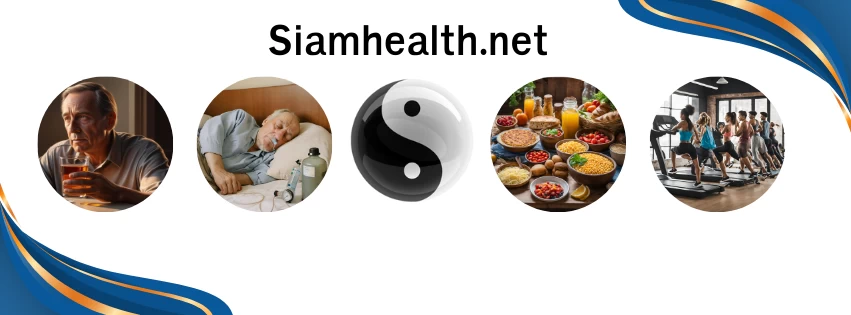การป้องกันโรคหลอดเลือดหัวใจตีบซ้ำ
สำหรับผู้ที่เคยเป็นโรคหลอดเลือดหัวใจตีบมาก่อนโอกาศที่จะเกิดการตีบซ้ำจะมีมาก หากไม่ดูแลปัจจัยเสี่ยงต่อการเกิดหลอดเลือดหัวใจตีบ ก็จะเกิดการตีบซ้ำ
ปัจัยเสี่ยงต่อการเกิดโรคหลอดเลือดแดงหัวใจตีบ
- อายุ
ชายมากกว่า 45 ปี,หญิงอายุมากกว่า
55 ปี หรือวัยหมดประจำเดือน
- ความดันโลหิตสูง
มากกว่า 140/90 มม.ปรอท
- โรคเบาหวาน
- สูบบุหรี่
- HDL
cholesterol < 35 mg%
- มีญาติสายตรงเป็นโรคหลอดเลือดหัวใจตีบก่อนวัย(ชายน้อยกว่า55ปี
หญิงน้อยกว่า 65 ปี)
- ถ้า
HDL > 60 mg%
ให้ลบปัจจัยเสี่ยงออกข้อหนึ่ง
ปัจจัยเสี่งข้อที่ 1 และ6ไม่สามารถเปลี่ยนแปลงได้
การป้องกันหลอดเลือดหัวใจตีบซ้ำ Secondary prevention
ผู้ป่วยและญาติจะต้องดูแลอะไรบ้าง
- ความดันโลหิตสูง เป้าหมายของความดันโลหิตอยู่ที่ 140/90 มิลิเมตรปรอท สำหรับบุคคลที่ไม่เป็นเบาหวานหรือโรคไต และ130/80 มิลิเมตรปรอทสำหรับคนที่ป่วยเป็นเบาหวานและโรคไต
- ยาต้านเกล็ดเลือดเช่นเอสไพรินทร์ขนาด81-162 มิลิกรัม อาจจะใช้ยา clopidogrel ในช่วงแรกของโรค
- การควบคุมระดับไขมันในเลือด LDL ให้ต่ำกว่า 100 mg/dLโดยการปรับพฤติกรรมหรือการใช้ยา statin
- การควบคุมน้ำหนัก ผู้ที่มีน้ำหนักเกินจะเสี่ยงต่อการเกิดโรคหัวใจและหลอดเลือด เป้าหมายดัชนีมวลกายอยู่ที่18.5 - 22.เส้รรอบเอวอยู่ที่ 90และ80เซ็นติเมตรในชายและหญิง
- การหยุดสูบบุหรี่การหยุดสูบบุหรี่จะลดอัตราการเสียชีวิตลงได้หนึ่งในสาม
- การฉีดวัคซีนป้องกันไข้หวัดใหญ่
- การออกกำลังกาย เป้าหมายของการออกกำลังกายวันละ 30 - 60 นาที่อย่างน้อยสัปดาห์ละ 5 วันการออกกำลังกายจะทำให้การควบคุมน้ำหนัก การควบคุมความดัน การควบคุมเบาหวานดีขึ้น
- การได้รับยาลดความดันโลหิตกลุ่มปิดกั้เบต้า betablocker เพราะยาปิดกั้นเบต้าจะลดอัตราการเสียชีวิตของผู้ป่วยโรคหัวใจและหลอดเลือดข้อห้ามในการให้ยาปิดกั้นเบต้า
- โรคหอบหืด
- ความดันโลหิตต่ำจากหัวใจ
- หัวใจเต้นช้า 50-60 ครั้งต่อนาที
- Second- or third-degree atrioventricular block
- หัวใจล้มเหลวหรือหัวใจวาย
- ความดันโลหิตต่ำกว่า 90 มิลิเมตรปรอท
- การได้รับยาลดความดันกลุ่ม ACE Inhibitors มีการศึกษาว่ายากลุ่มนี้สามารถลดอัตราการเสียชีวิตของผู้ป่วยได้ร้อยละ10-20
- โรคเบาหวาน ให้ควบคุมโรคที่พบร่วมกับโรคเบาหวานเช่นไขมัน ความดันโลหิตสูง
- การจัดการเรื่องโรคซึมเศร้า
การเพิ่มเลือดไปเลี้ยงหัวใจ
การเพิ่มเลือดไปเลี้ยงหัวใจทำได้โดยการใส่สายสวนหลอดเลือดหัวใจ หรือการผ่าตัดเปลี่ยนหลอดเลือดหัวใจ

กลับหน้าแรก

